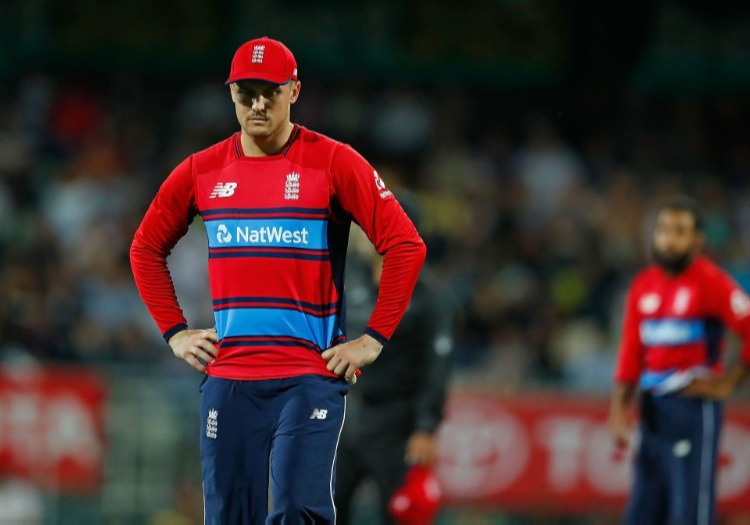SIMON HUGHES: The issue was highlighted for the umpteenth time this winter by the ‘catch’ Jason Roy took off Glenn Maxwell in the T20 at Hobart

Jason Roy cannot believe his catch is given not out
As football and rugby grapple with the use of replays, it is also time for cricket to review its use of technology. Or perhaps, more precisely, the players may need a rethink.
The issue was highlighted for the umpteenth time this winter by the ‘catch’ Jason Roy took off Glenn Maxwell in the T20 at Hobart.
Moving in from long-off, Roy thought he had got his fingers under the ball and understandably and honestly claimed the catch.
The commentators, too, believed he had taken it cleanly. They waited with bated breath for the replays which they knew would raise doubts about the legitimacy of the catch. All the usual lines were wheeled out about the cameras ‘flattening the image’ and giving only a two-dimensional impression of the incident.
"Players are going to have recalibrate how they take and claim catches. They will have to accept that unless they get their whole, closed hand or hands under the ball it is most likely not out."
Inevitably the replays made it look as if the ball had touched the ground.
Despite Michael Clarke’s protestations in particular, and the aggrieved expressions of the adjacent England fielders, Maxwell was given not out. He went on to win the match for Australia.
But when a fielder just gets part of his hand or hands under the ball, especially when, in this case, Roy’s fingers were spread, there is no way they can be sure the ball did not touch the grass.
There was a wide space between Roy’s index and middle fingers. The impact of a fast traveling ball must push those fingers momentarily into the ground and the ball with it (remember how a bat bends in ultra slow motion when hit by the ball). The camera, for all its limitations, does not lie.
"That is 100% out"
— Cricket on BT Sport (@btsportcricket) February 7, 2018
Jason Roy is shaking his head in disbelief 😳
He thinks he has Glenn Maxwell caught but the video replay and third umpire save the Australian. pic.twitter.com/QOjzMoKFrT
Players are going to have to recalibrate how they take and claim catches. They will have to accept that unless they get their whole, closed hand or hands under the ball it is most likely not out.
They may have to practise a different catching technique to make sure with low catches that the fingers are pressed together tighter and they scoop the ball up quicker.
A wicket is a key event in cricket – even more than a goal in football or a try in rugby (you can always get a goal or a try back unless it's the last minute).
It is right that all available technology is checked to prove conclusively that the batsman is out before he is sent on his way.